Occupant Classification System
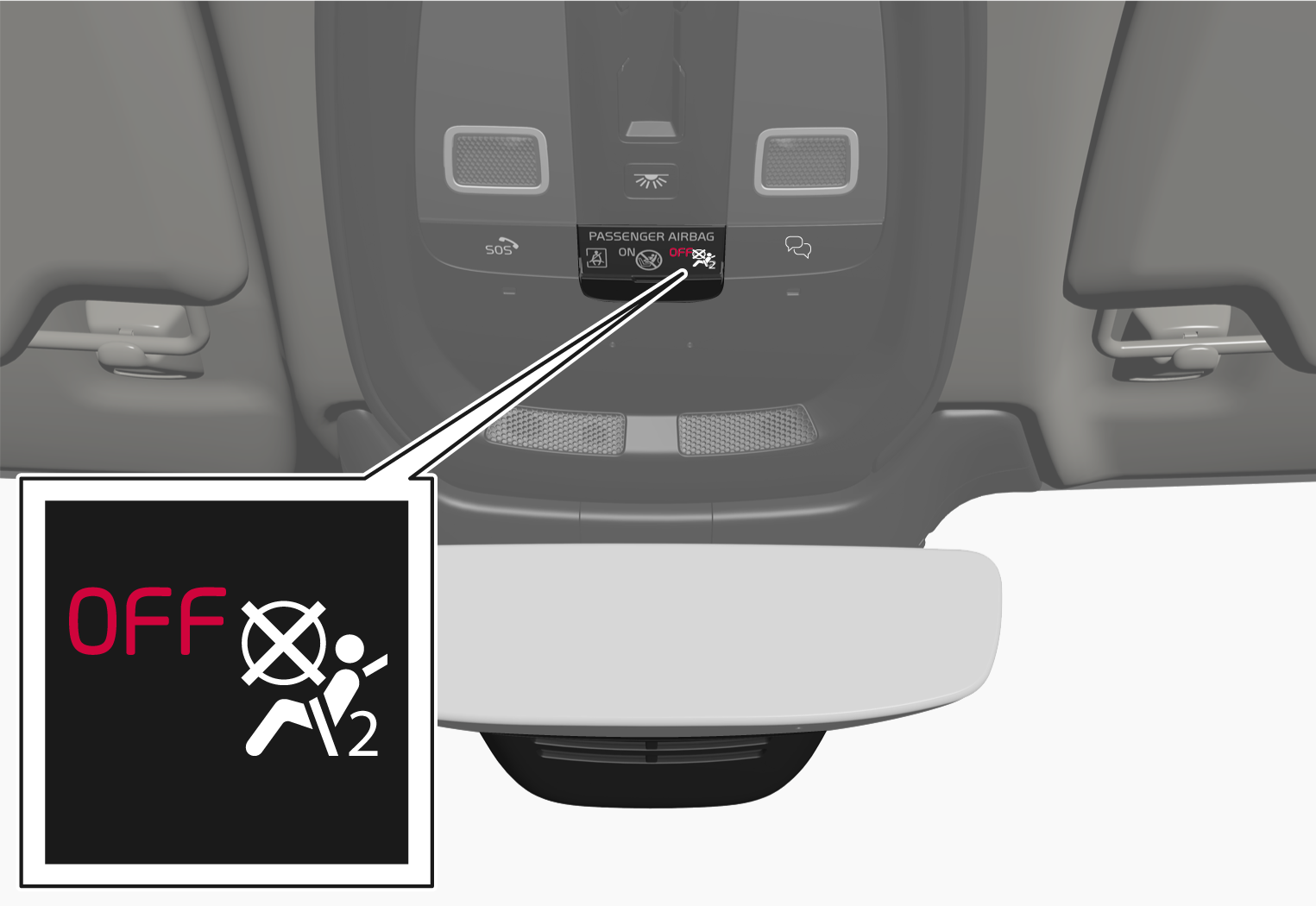
The front passenger-side airbag is either enabled or disabled depending on the classification of the passenger in the front passenger seat.
Volvo follows NHTSA's recommendations and recommends that ALL children up to and including 12 years of age sit in the rear seat and are restrained in a suitable manner appropriate to their height and weight. This is strongly recommended for children in rear-facing child seats.
| Classification of passengers in front passenger seat | OCS indicator light status | Passenger's side front airbag status |
|---|---|---|
| The passenger is classified as an adult. | OCS indicator light is not lit. | Enabled |
| The passenger is classified as a small child in a front-facing child seat. | The OCS indicator light is lit or not lit depending on several parameters that determine the most suitable status. | Enabled or disabled depending on several parameters that determine the most suitable status. |
| The passenger is classified as a small child in a rear-facing child seat. | OCS indicator light is lit. | Disabled |
| The passenger seat is empty. | OCS indicator light is lit. | Disabled |
Occupant Classification System function
OCS works in combination with sensors in the front passenger seat. The sensors are intended to detect the presence, and classification of, an occupant sitting correctly and determine whether the front passenger airbag should be enabled (able to be deployed) or disabled (cannot be deployed).
The OCS uses an indicator light with the text PASSENGER AIRBAG OFF, which will illuminate and stay on to remind you that the passenger's side front airbag is disabled. The PASSENGER AIRBAG OFF indicator light is located in the overhead console near the bracket for the rearview mirror.
Always pay attention that the status of the indicator light shows the correct classification both before and while driving when the front passenger seat is occupied.
Note

If a malfunction is detected in the system, the OCS indicator light will remain illuminated and the SRS warning symbol will be shown in the instrument panel along with a text message.
Warning
Classification of adult
- be wearing their seat belt
- sit normally in the seat, in the center of the seat cushion
- sit upright in the seat with their shoulders against the backrest
- have their legs comfortably extended with their feet on the floor.
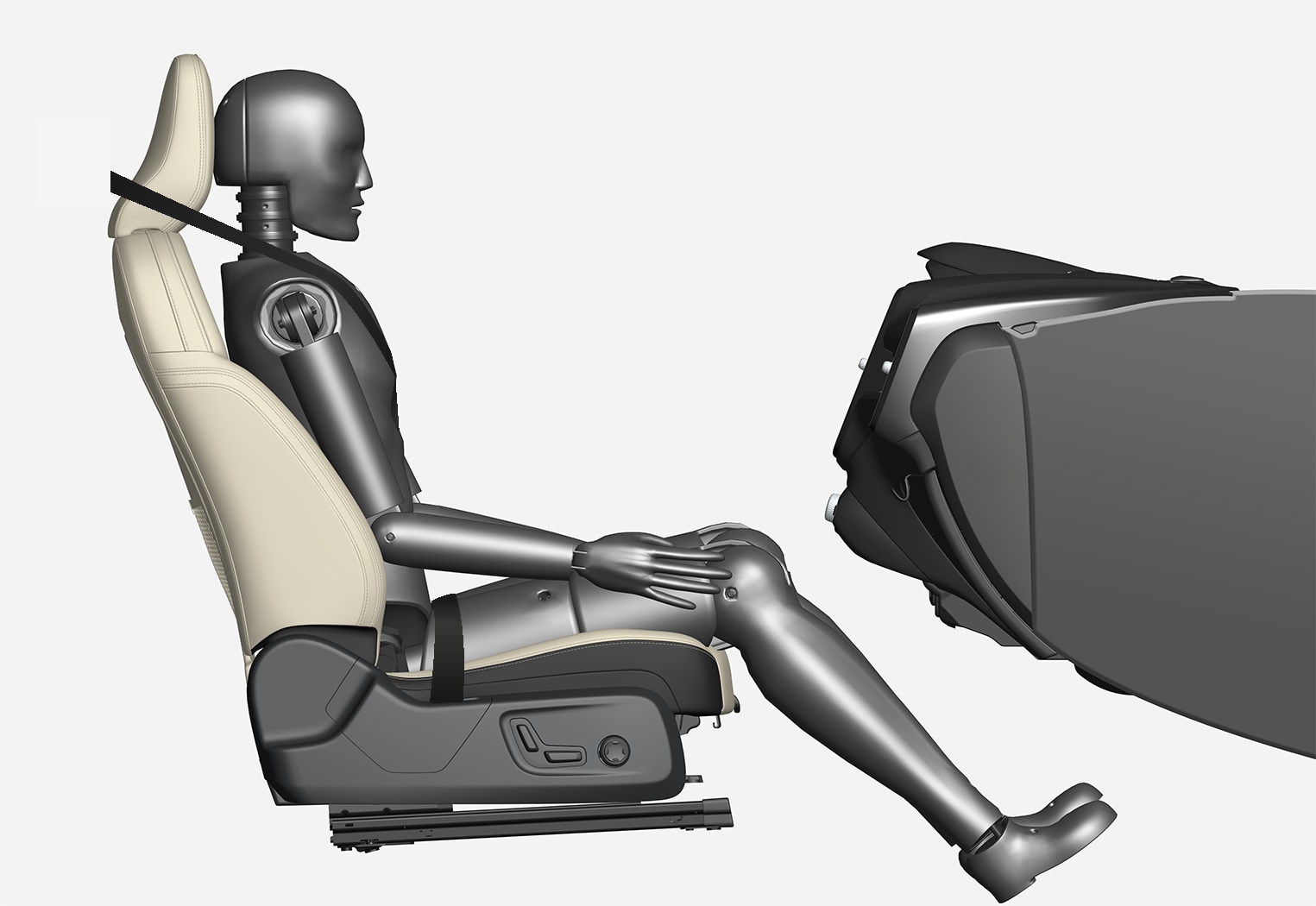
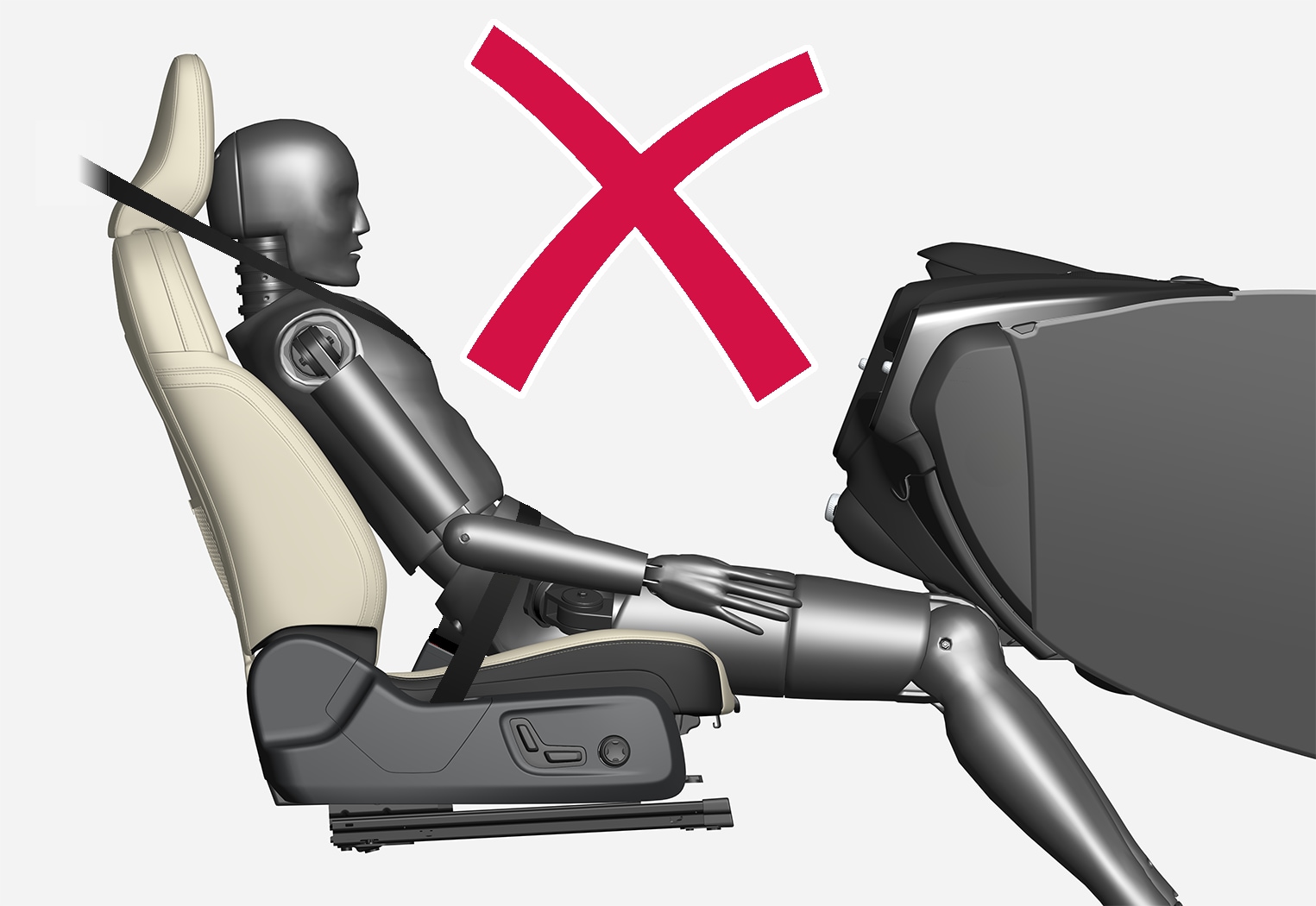
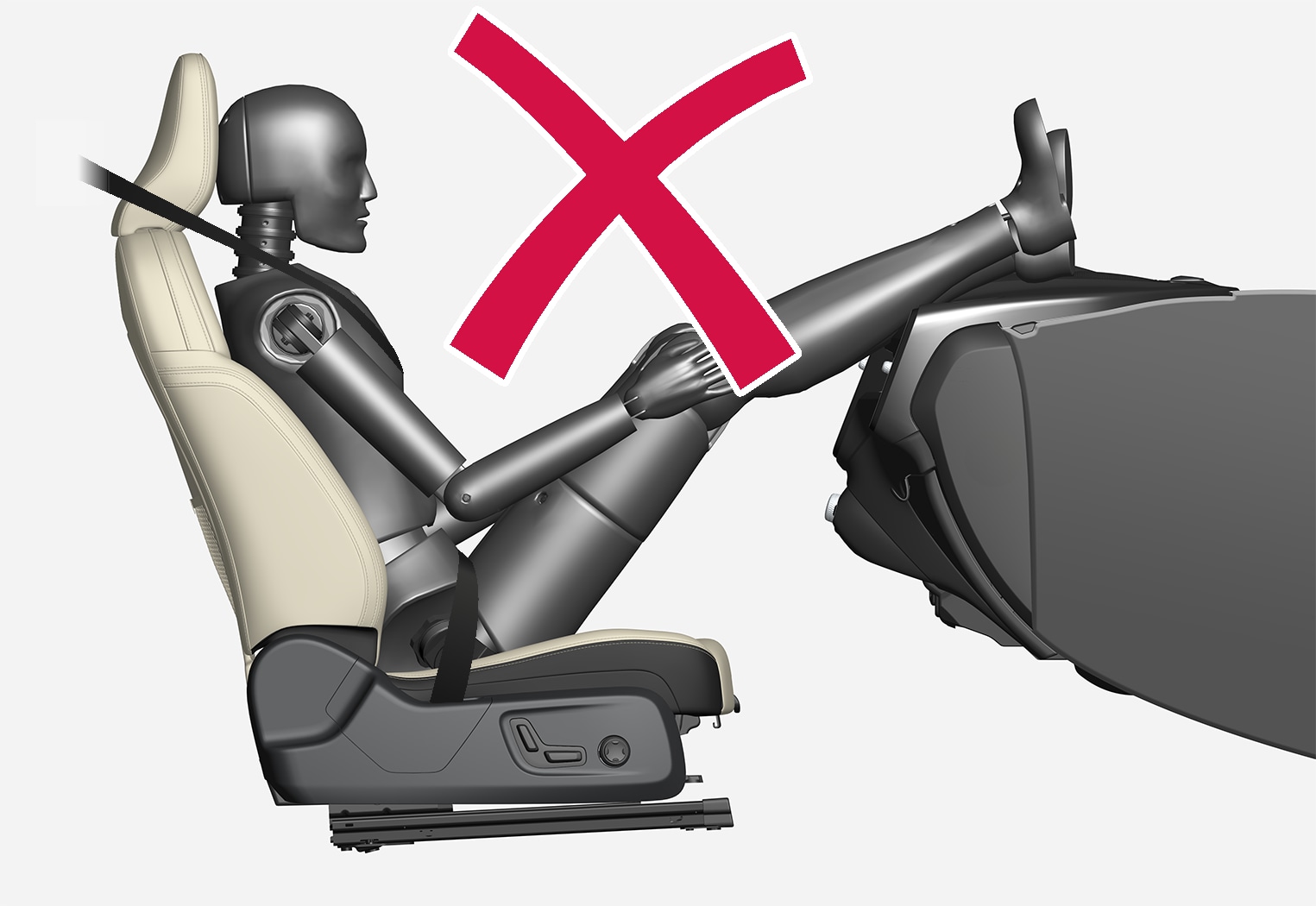
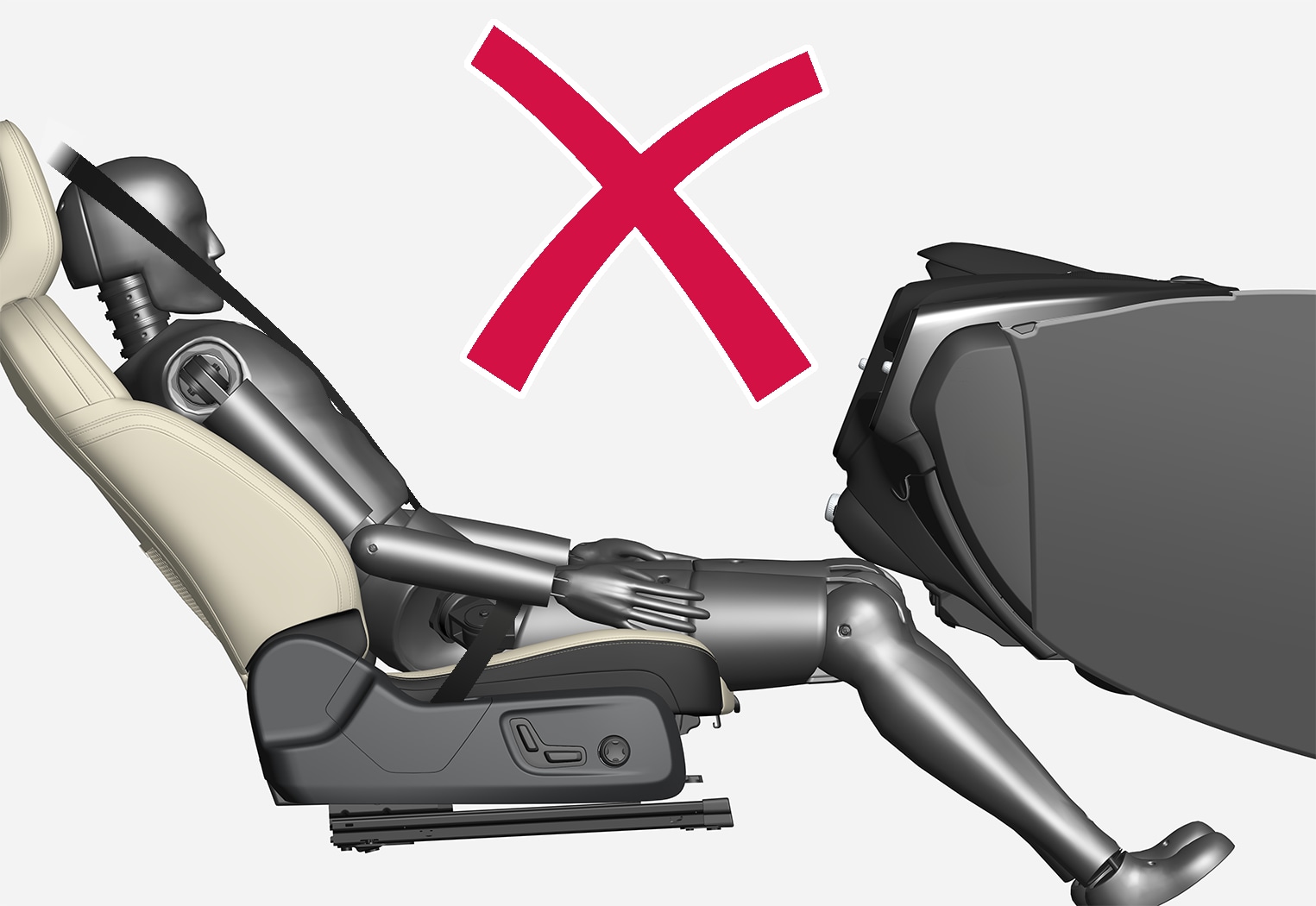
- The passenger must never get up from the seat cushion using the armrest in the door or center console, by pushing their feet against the floor or by pushing against the backrest.
- The passenger must never sit on the side of the seat cushion, slide forward on the seat cushion or fold the backrest to a lying position.
- The passenger must never wear wet or thick clothing, e.g. ski wear or padded garments.
- Never place any objects between the passenger and the seat cushion, e.g. pillows, heating blankets or ordinary blankets, seat liners or mats.
- Never place a radio transmitter (e.g. hunting radio or walkie-talkie) or device that is being charged (e.g. cellular phone, tablet or computer) on or under the seat cushion. Never let anyone sitting on the passenger seat use a radio transmitter or device that is being charged.
Warning
If a person of adult size is sitting in the front passenger's seat, but the OCS indicator lamp is on, it is possible that the person isn't sitting properly in the seat.
If this occurs, turn off the vehicle and ask the person to follow the above instructions for accurate classification. Restart the vehicle and have the person remain in this position for about two minutes. This will allow the system to detect that person and enable the passenger's frontal airbag.
If the OCS indicator lamp remains on even after this, the person should be advised to ride in the rear seat.
This may indicate restrictions in the OCS classification ability, e.g. that the person is too light to be classified as an adult. It does not need to indicate an OCS error.
Classification of child
Volvo follows NHTSA's recommendations and recommends that ALL children up to and including 12 years of age sit in the rear seat. This is strongly recommended for children in rear-facing child seats.
If a child in a child restraint is placed in the front passenger seat, the child restraint must be installed according to the manufacturer's instructions to help ensure accurate classification.
- Never place any items or accessories on the passenger seat, between the child seat and the seat cushion or near to the seat cushion.
- Never place a radio transmitter (e.g. hunting radio or walkie-talkie) or device that is being charged (e.g. cellular phone, tablet or computer) on the seat cushion. Never let anyone sitting on the passenger seat use a radio transmitter or device that is being charged.
- Never place wet clothing or fluids on the passenger seat.
- Always correctly position the child seat so that the entire lower section of the child seat rests against the seat cushion.
- Always place a front-facing child seat as far back as possible against the seat back.
Warning
Modifications
If you are considering modifying your vehicle in any way to accommodate a disability, for example by altering or adapting the driver's or front passenger's seat(s) and/or airbag systems, please contact Volvo at:
In the United States
Volvo Car USA, LLC
Customer Care Center
1800 Volvo Place
Mahwah, New Jersey 07430
1-800-458-1552
In Canada
Volvo Car Canada Ltd.
Customer Care Centre
9130 Leslie Street, Suite 101
Richmond Hill, Ontario L4B 0B9
1-800-663-8255
Warning
Never attempt to open, remove or repair any components in the OCS system. Volvo recommends contacting an authorized Volvo workshop. Incorrectly performed repairs to the OCS system could impair function and lead to serious injury.
The front passenger's seat should not be modified in any way. This could affect the function of the OCS system.